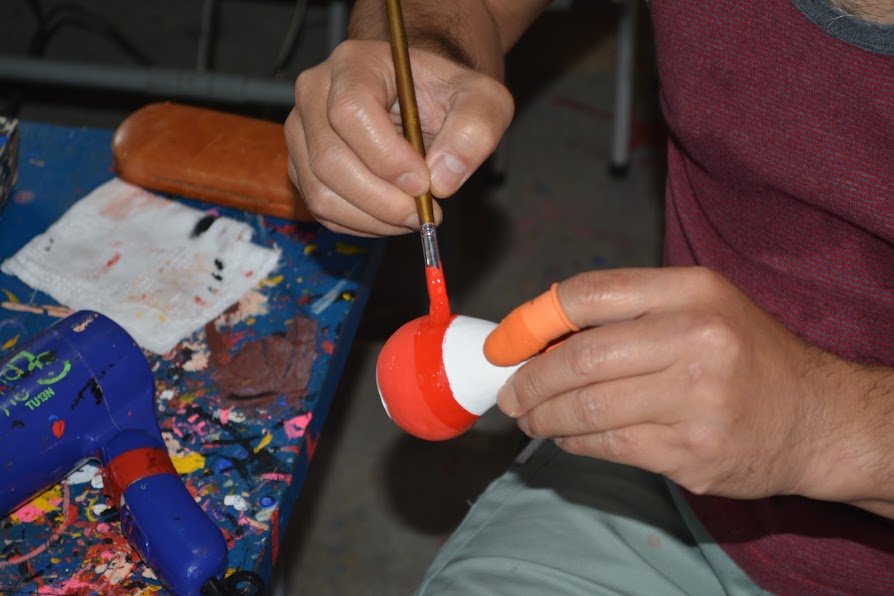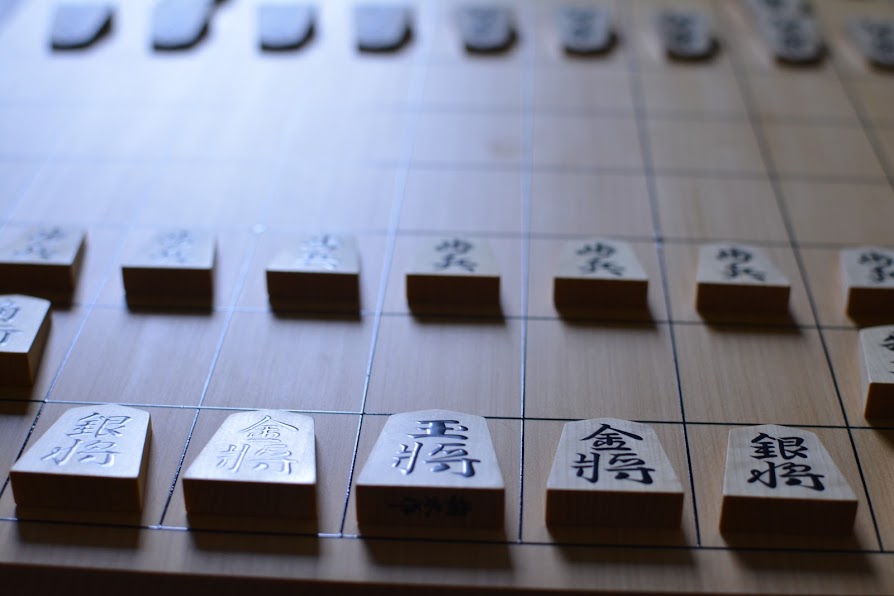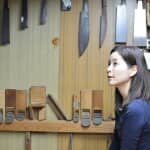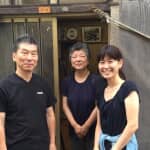Japanese 5 stars 4 November 2016
Five Great People You Should Know to Enjoy Traditional Japanese Culture
We, I-tsu-tsu Co. Ltd., are primarily developing projects to incorporate traditional Japanese culture into child care.
I would like to introduce five great Japanese figures to help you discover a new interest in traditional Japanese culture. Why five? Because, our company’s name, “I-tsu-tus,” is a numeral of Japanese origin meaning “Five”.

1. Himiko: A Forerunner of “Yamato Nadeshiko”
First, I would like to put down the name of Japanese ancient queen, Himiko. The Japanese phrase “Yamato Nadeshiko” implies that traditional Japanese women are very modest and beautiful. I think Himiko is one of them.
Most Japanese people know her name. Needless to say, she was an ancient queen and ruled “Yamataikoku.” “Yamataikoku” is a historical Japanese state thought to have existed during the late Yayoi period. The Chinese also gave the clear description of Himiko in their history book, “Gisshiwajinden” (records of “Wa” people, an “Account of the Wa” in “The History of the Wei Dynasty”). She was feared, because she confounded her people using “Kido” (purported magic to call up the devil).
The traditional Japanese culture that Himiko engaged in was fortune telling. In her days, mainly two methods were used to tell the future: “Kiboku” and “Futomani.” With “Kiboku”, a fortune teller toasted a turtle shell in the fire and interpreted the fissures that appeared. “Futomani”, or scapulimancy used the shoulder blade of a deer instead of a turtle shell.
In Japanese history, several figures, who are believed to have possessed supernatural divine power, have emerged after Himiko, such as Abe no Seimei known as “Onmyoji” (the name of a government post under the Ritsuryo legal system of ancient Japan) and “Itako” existing in Aomori Prefecture (Japanese shaman who are said to be able to communicate with the spirits of the dead.) Among those figures, Himiko notably had great influence not only on her people but also overseas at the very first stage of Japanese history. She was a surely charismatic leader.
This is what makes Himiko a forerunner of “Yamatto Nadeshiko.” Women of today may use her as a model for strong women.
So much for Himiko’s masculine image. But I think we can observe her femininity in her preference for divinations. It seems that divination was and is favored by women.
2. Mokichi Saito: A Psychiatrist and Poet
Mokichi Saito was a famous poet who was active from the late Meiji to Showa period. He was a man with two passions, that a psychiatrist and a poet.
The first son of Saito had also two jobs; a psychiatrist and an essayist called “Mota-san.” His second son is Morio Kita, who wrote the well known “Doctor Manbo” and was also a psychiatrist.
“The apple doesn’t fall far from the tree.” What healthy genes the apples had!
The most famous achievement in his career was his works on a Tanka anthology “Araragi” published in 1908. However, I would like to tell you his best achievement from my personal point of view, his publishing of “Manyoshuka.”
“Manyoshu”, which was compiled in the Nara period, is the oldest existing collection of Japanese poetry. “Manyoshuka” is a collection of poems that Mokichi Saito picked and chose from the “Manyoshu.” Those poems not only reflect his taste, but serve as academic resources. Saito included annotations from a scholar’s standpoint and his own deep discussion about them.
Saito was an excellent writer. Ryunosuke Akutagaawa, a renowned writer and known for Rashomon (1950), recognized Saito’s talent for writing as the best for novels. While Saito was admired for his writing talent, he also had great spirit of inquiry. He studied very hard and wrote reports about other poets, such as Kakinomoto Hitomaro and Minamoto Sanetomo. I suppose that those works were inspired by his own dedication as a doctor and a scholar.
My favorite poem in “Manyoshuka” is one composed by Sano Nochigamino Otome, a female waka poet. Its meaning is very passionate: “There is a long way to my lover’s place of exile. Oh, God, please give me a consuming fire to burn the way.”
I feel compassion for ancestor’s feeling. Siato’s choice is right on point.
As “Manyoshu” has been studied and published in English, you could enjoy old Japanese poems of “Manyoshu” in English. We also posted here some articles to inform the way to appreciate Japanese Waka, Japanese poetry. I do hope you will find out more about Japanese poetry.
3. Sharaku: Mr. Mysterious in The Ukiyoe World
You probably don’t argue that the most promoted Japanese culture overseas recently is Manga and Anime (Japanese animations). Further back in history, there were Ukiyoe (Japanese wood block prints) similar to Manga and Anime.
The world has been fascinated by Japanese Manga and Anime. Likewise, in the past Japanese arts including Ukiyoe captured Western’s hearts. The fad was triggered by the world expo held in Paris. People called this boom “Japonism.”
Especially Ukiyoe became extremely popular among all Japanese arts. Many great Masters such as Monet and Gauguin were deeply attracted to Ukiyoe.
Why am I introducing Sharaku, and not Utamaro, Hokusai, or Harunobu? Actually there was a quite impressive lineup of wood block printers in those days (oops! I forgot to include Kuniyoshi.) Anyway, the answer is why Sharaku is his mysterious aura.
As you know, women are attracted by a mysterious guy. Right?
I have described Sharaku as a male, but the truth is nobody knows if Sharaku actually was a male or a female, if he (she) even existed.
Sharaku was famed for his unique composition and exaggeration of portraits of Kabuki actors. His works were widely sought by Edo commoners.
But he worked for only 10 months. Only ten months! He disappeared and never appeared.
There are many studies about Sharaku, and they discussed who was “Sharaku.” My favorite assumption was written by Soji Shimada, a famous mystery novelist. Magical charm projected from Sharaku stimulated an established novelist’s interests. It’s your turn to be stimulated!
4. Sori Yanagi: with His Products, You Must Become a Great Chef!
Sori Yanagi is a leading contemporary industrial designer. He mainly designs kitchen utensils. You may well ask, “Do kitchen utensils reflect traditional Japanese culture?”
In my personal opinion, I would say, “Yes, definitely, his works are considered as traditional Japanese culture.”
I say so, because of his approach to design. He always pursues usability, when he produces kitchen utensils.
Let me introduce you some his products with unique features: a pan with two pouring spouts on the both side of its edge, an adjustable lid and a handy-shaped handle, and also a bowl created to meet gourmet scholars’ needs.
His words reflect a sensitivity that Japanese possess; “The ultimate goal of designe is satisfying end users.” “Authentic beauty emerges naturally, not intentionally.” Japanese sensitivity comes from the highest value of traditional Japanese culture, which is expressed by a term, “Wabi and Sabi.” Japanese tend to see ultimate aesthetic value in functionality and simplicity, not in being flashy.
By the way, Sori’s father is a Soetsu Yanagi who was a founder of the folk crafts movement in Japan and the first curator of the Japan Folk Crafts Museum. Sori might have got his sophisticated Japanese sensitivity from his father.

5. Soukei Oohashi: How Can We, I-tsu-tsu, Forget Shogi! Shogi Myoseki
Myoseki is a professional name based on a Japanese traditional naming convention that is basically associated with the arts, or in the certain social groups and families. It is not a mere name, but a name or title customarily earned.
Soukei Oohashi is “Myoseki”, and it is said that in total 12 Shogi players succeeded to this rank.
Usually in any field, the founder or the first possesses strongest charismatic power. Soukei Oohashi the first was no exception with interesting episodes.
When his name, Soukei, is written in Japanese characters, one Japanese Kanji, “桂”, standing for a Shogi piece, KNIGHT, is used in it. This is because he was really good at using that piece. Nobunaga Oda was very impressed with his technique and gave him that Kanji, “桂.” Also, he is regarded as a writer of the oldest existing Shogi book. In addition, the first Soukei became the first Meijin in the age of Tokugawa Ieyasu.
It’s not too much to say Soukei Oohashi the first was the legend of Shogi in the history of Shogi.
You may hear a Shogi term, “Oohashi style”, in today’s Shogi world.
“Oohashi style” refers to the way to setup Shogi pieces. Many Japanese professional Shogi players follow this style.
The order is: the KING is set at the start, and then the left and right GOLD, left and right SILVERs, left and right KNIGHTs, and left and right LANCEs, followed by the BISHOP and the ROOK, and then the PAWNs, starting from the center to the left and right edge file.
“Oohashi style” to setup pieces is favored even now. This fact will tell how much this person exerted his influence to Shogi world.

Now, how does it all sound? Divinations might take some study to use, but some aspects of Japanese culture might not; you could start Japanese poetry and Shogi right now! If one of them caught your interest, pass it on to your children.



